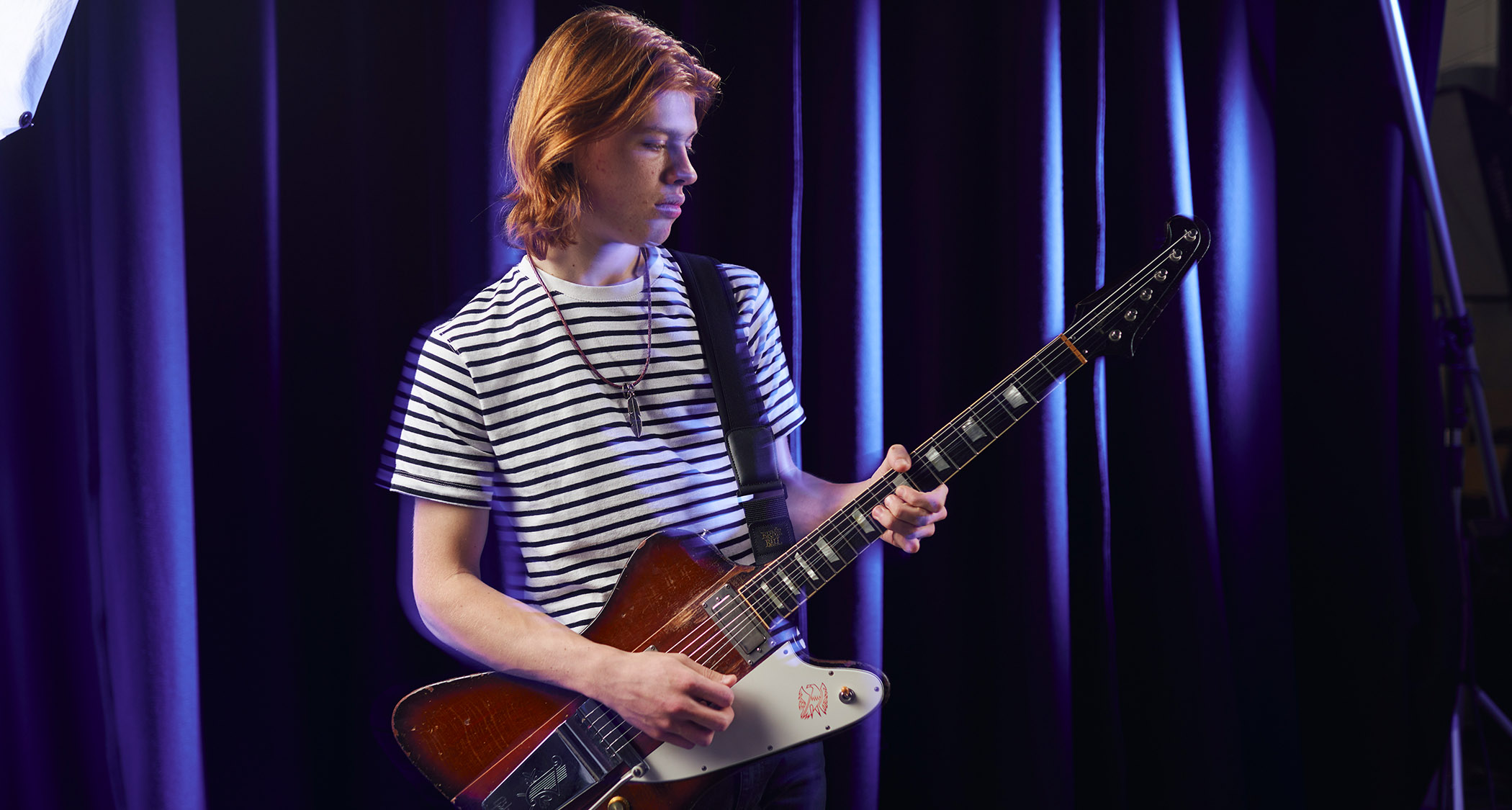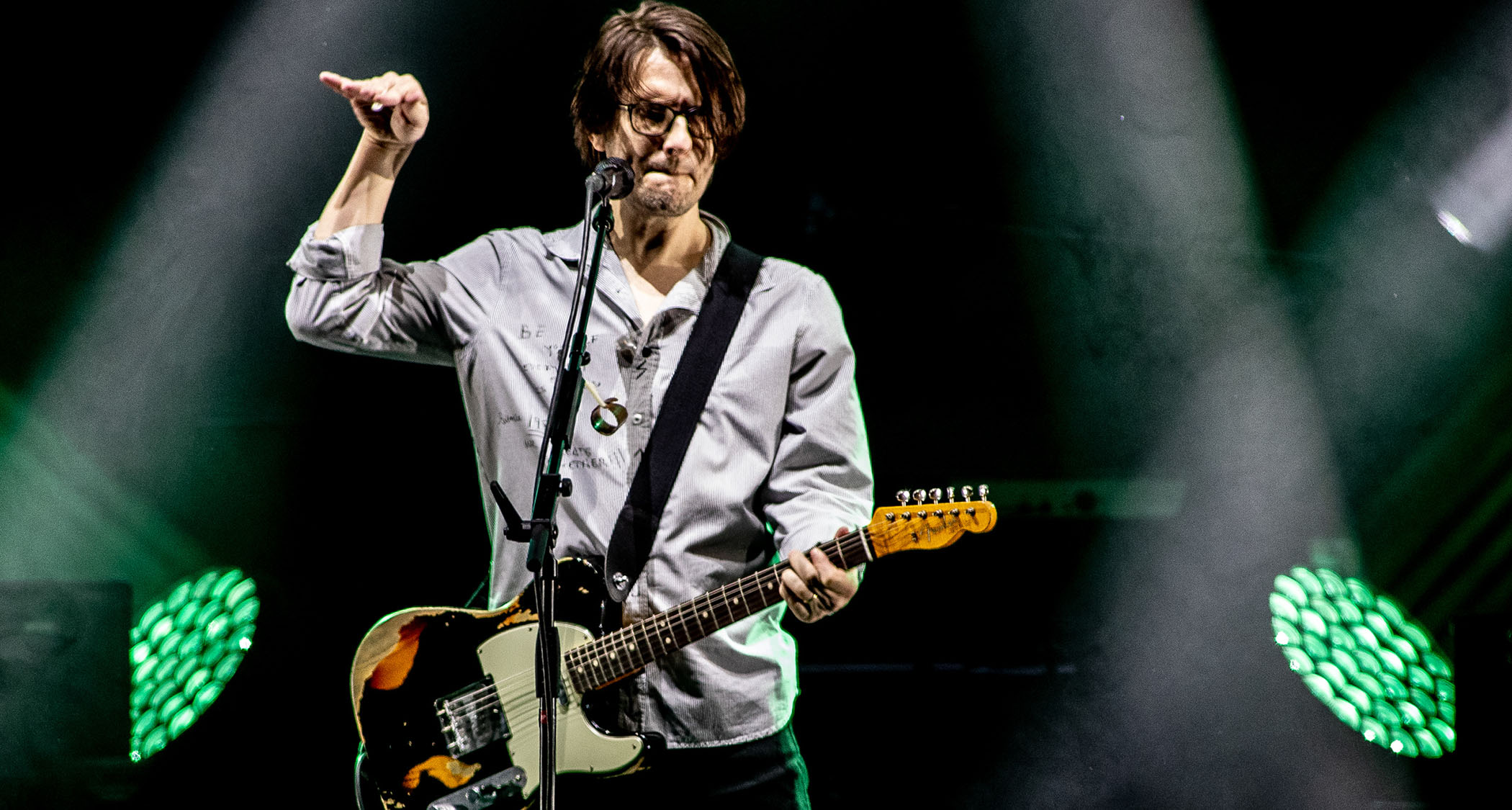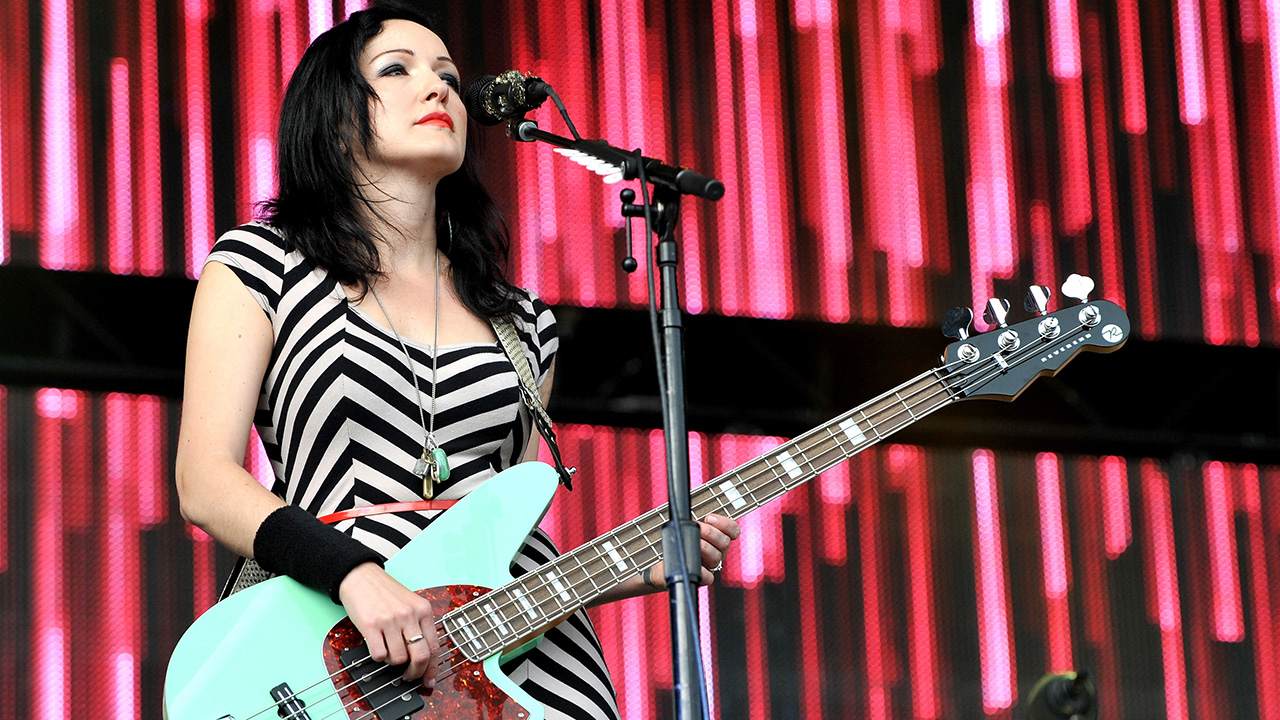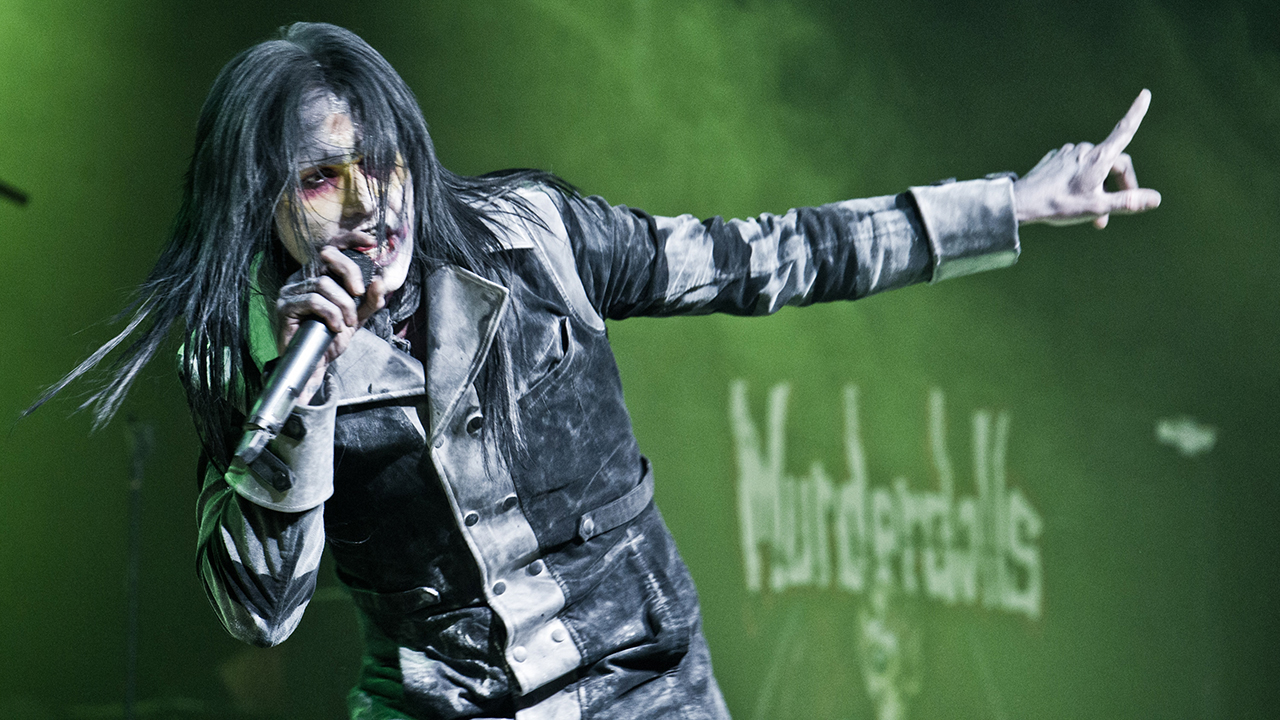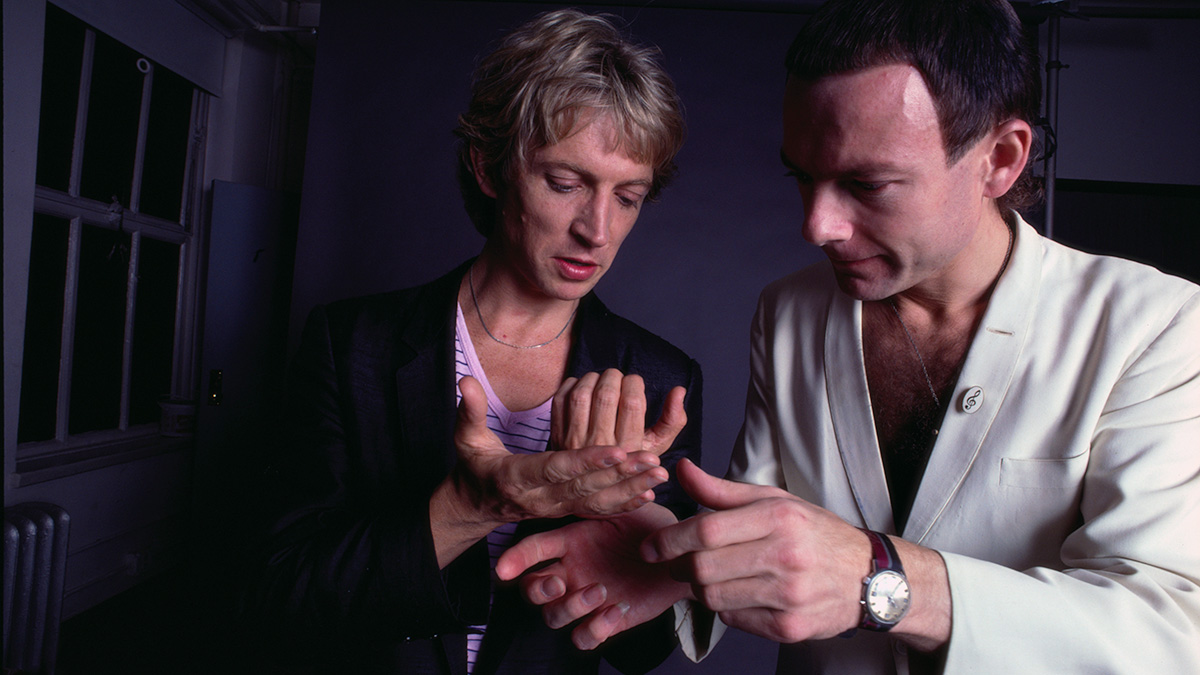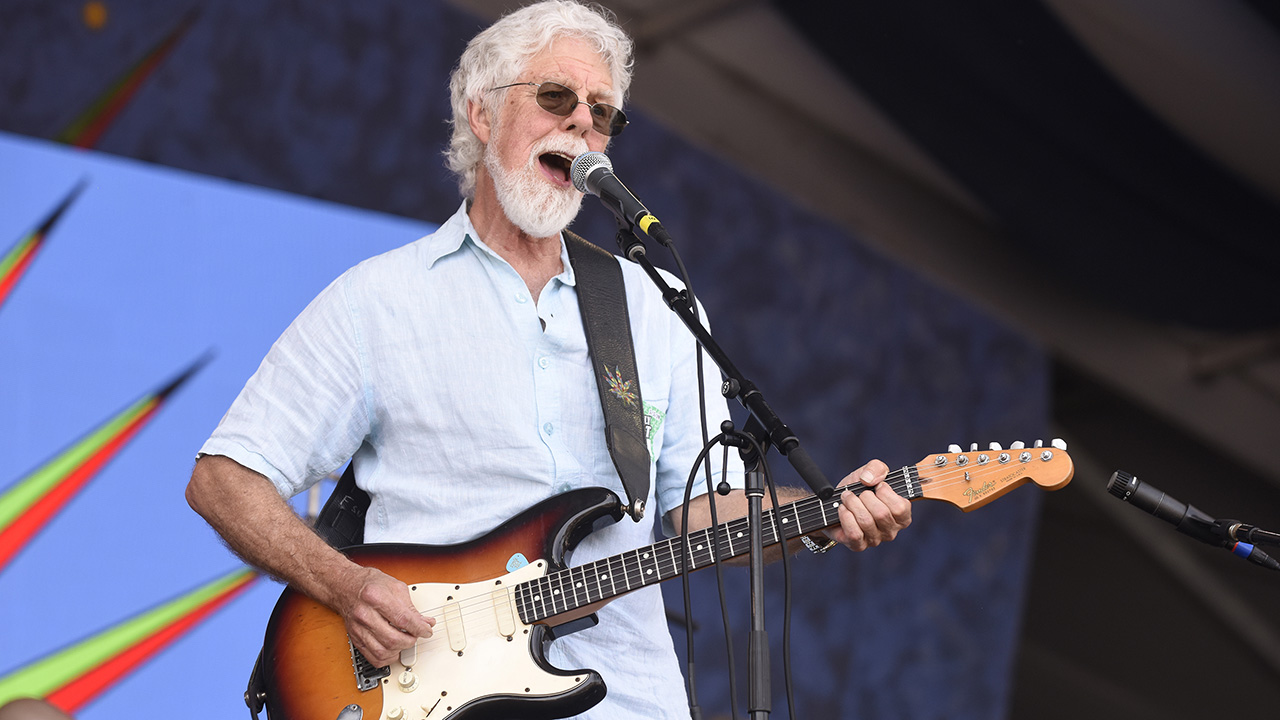“Johnny Marr stood there for five minutes watching me use a reverb tank as a guitar bow. He must have thought it was the stupidest thing he’d ever seen”: Meet LA Priest, the inventor-guitarist questioning everything you know about tone
UK musician and tonal pioneer Sam Eastgate is using a pile of self-built pedals, an obscure guitar and an amp he literally found in a dumpster to create a sound unlike anything else

There are guitarists who you would describe as unique because of small quirks: perhaps a distinctive vibrato, or their use of certain pedals. And there are those players who are actually singular in their approach to the instrument. Sam Eastgate of LA Priest is very much in the latter camp.
Surrounded by a wall of self-built pedals, DIY synth gear (most notably his drum machine GENE) and a ’60s PA tube amp he dug out of a dumpster, his playing lies at the nexus of synth and guitar, celebrating the anarchic qualities of both instruments – the two greatest democratizing and experimental innovations of 20th century music.
At the heart of it all is his original, paint-covered Watkins Rapier – an early UK electric guitar, widely regarded as “a piece of shit” by anyone else who plays it – strung with a bass string in the place of the low E. It is also a metaphor for an idiosyncratic, rattling and organic musical approach that, like the guitar itself, seems like it could fall to bits at any moment.
Ultimately, as Eastgate tells us, the beauty of playing the guitar is that it’s always unique, no matter how disciplined you are, but here is a player who lives on the edge – of his playing and tonal capabilities, the ability of his gear and, as an observer, the edge of your seat…
How would you describe your approach to guitar playing?
“I think I've always thought of it technically. But then when it comes to playing, it's just expression. I'm not a technical player – I've got quite short fingers, for one thing – and everything that I want to do doesn't come out like that, anyway. So I tend to see where my hands take it. I like a lot of music where the idea is technical, but the playing style is very raw.
“Then I look for sounds that morph between what you think of as a synthesized or ambiguous soundscape. I don't want to coat everything in effects, though. I think that's often used as a way of disguising a guitar – but I like to keep that sound very raw so a lot of the guitar sounds that you hear on my songs are very close to the original tone of the guitar.”
Get The Pick Newsletter
All the latest guitar news, interviews, lessons, reviews, deals and more, direct to your inbox!
“A lot of that is just to do with my guitar, the Watkins Rapier. Any other guitarists who have picked it up have just said, ‘This is shit! Why do you play this!?’ And to anybody who's played a normal guitar it does feel like a piece of shit!”
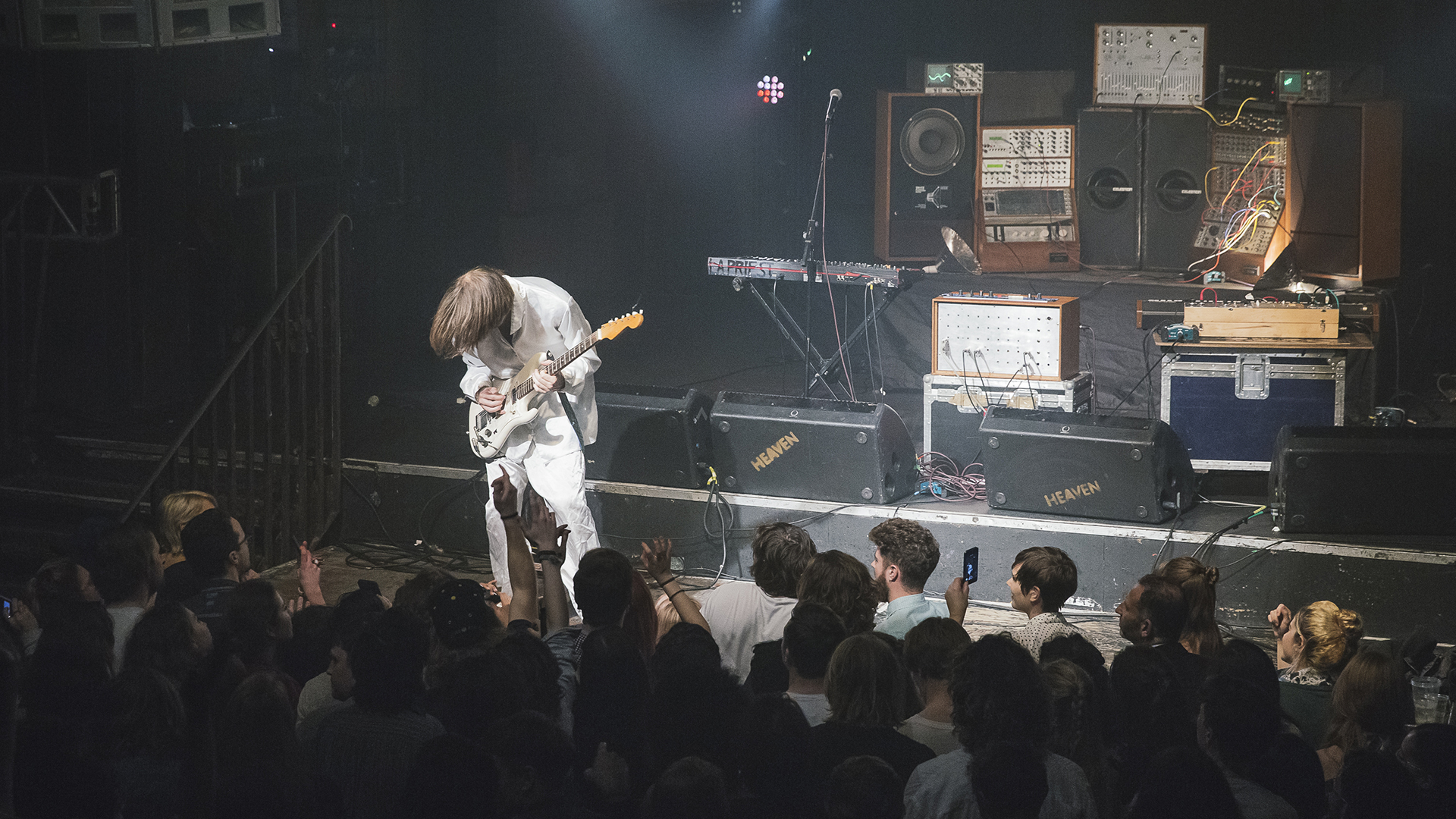
So why does a guitar that everybody else hates work so well for you?
“I’ve never really bothered playing decent guitars. For one thing, I find them too heavy. The Watkins weighs about a kilogram and a half [3.3 lbs], which means I can pretty much ignore it on stage.
“But the really lucky thing about it is that it was [made in the UK] in the early ’60s when they didn't know a lot about the American guitars. It was just Charlie Watkins and his brother trying to guesstimate what an electric guitar should be.
“So the pickups don't have a guitar tone; they have a flat response – the entire frequency spectrum – which is why when normal guitar players play it, they can't hear what they want to hear. It doesn't boost that [mid] presence like a guitar with normal pickups. It just sounds like a mushy mess.
“But, when you actually record it – especially when you DI it, straight into the recording console – it's got this deep sub-bass range and this weird, twinkly high-end. So a lot of the sounds that people ask me about are really just that guitar.”
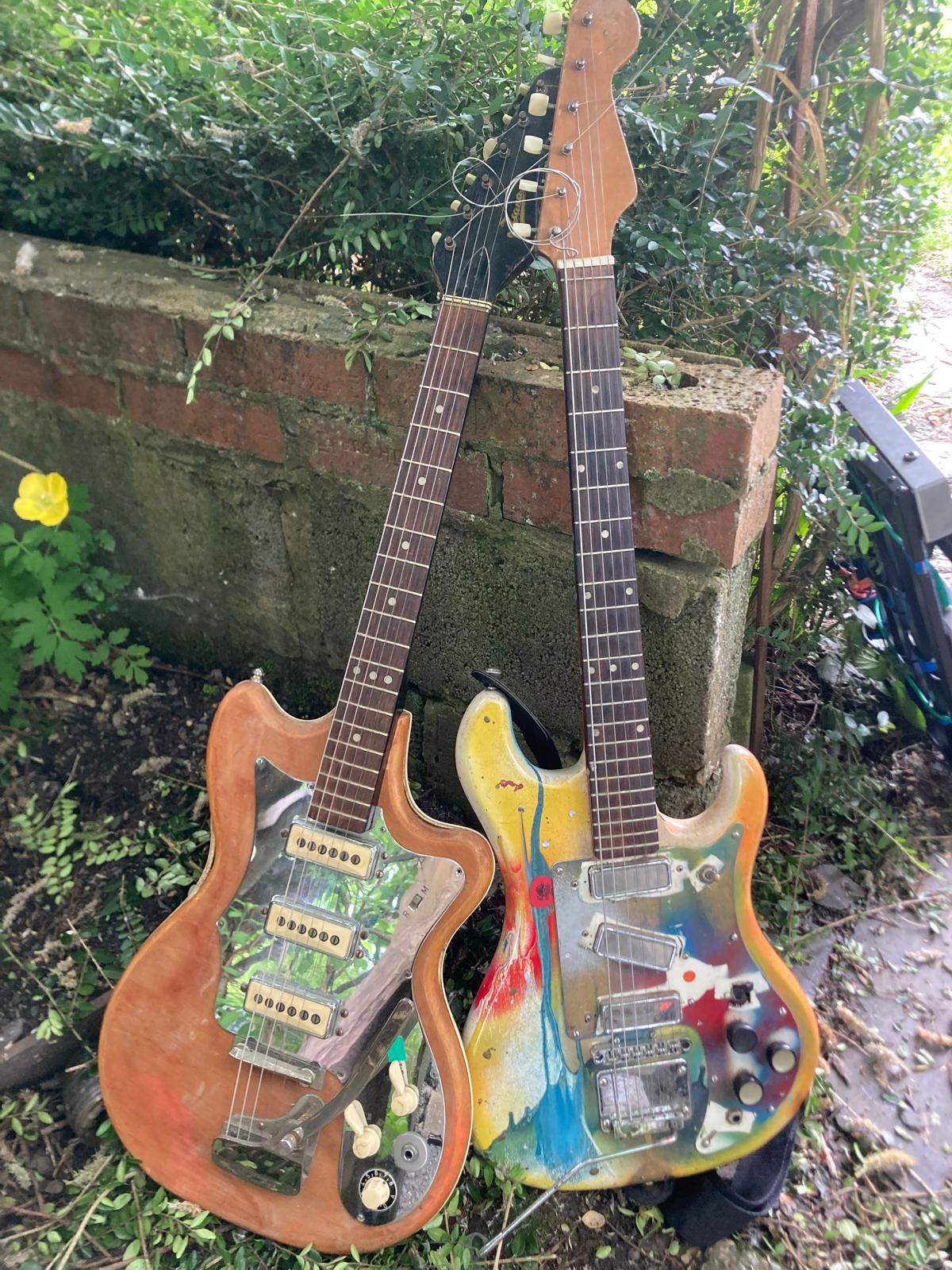
Another thing that will feel unusual to most players is that you've got it strung with a bass string in the place of the low E, right?
“Yeah, that came about because on my last record [2023’s Fase Luna, recorded while on a studio building trip to Mexico and Costa Rica – Ed], I only had that guitar with me. I wanted to make a sort of underwater, natural-sounding record and I thought that synths were gonna give me that sound. But lo and behold, the guitar just did it way better.
Tuning it is a nightmare, though. If that bass tuning peg gets tapped slightly, the whole guitar goes out
“I ordered a bass string off Mexican Amazon, put it on and that was it [the sound I wanted]. I’ve tried it on other guitars, but you can't hear the bass at all on them. But on the Watkins Rapier [with those flat response pickups], it just sounds like the best bass guitar.
“Tuning it is a nightmare, though. If that bass tuning peg gets tapped slightly, the whole guitar goes out, but if I just tune the bass string, everything else goes back!”
You’ve got a lot of handmade stuff on your pedalboard. Can you talk me through that?
“It starts by going into my DIY Treble Booster. It’s the first little thing that I built and it really brings out the good stuff of the Watkins Rapier. It’s a copy of this little Boss mixer that I used to record everything through, so it’s permanently gained.
“Then it goes into the tuner from there. I can't tune my guitar without gaining it up first because that guitar’s too quiet for the tuner! I also use the tuner to split the signal for the bass as well.
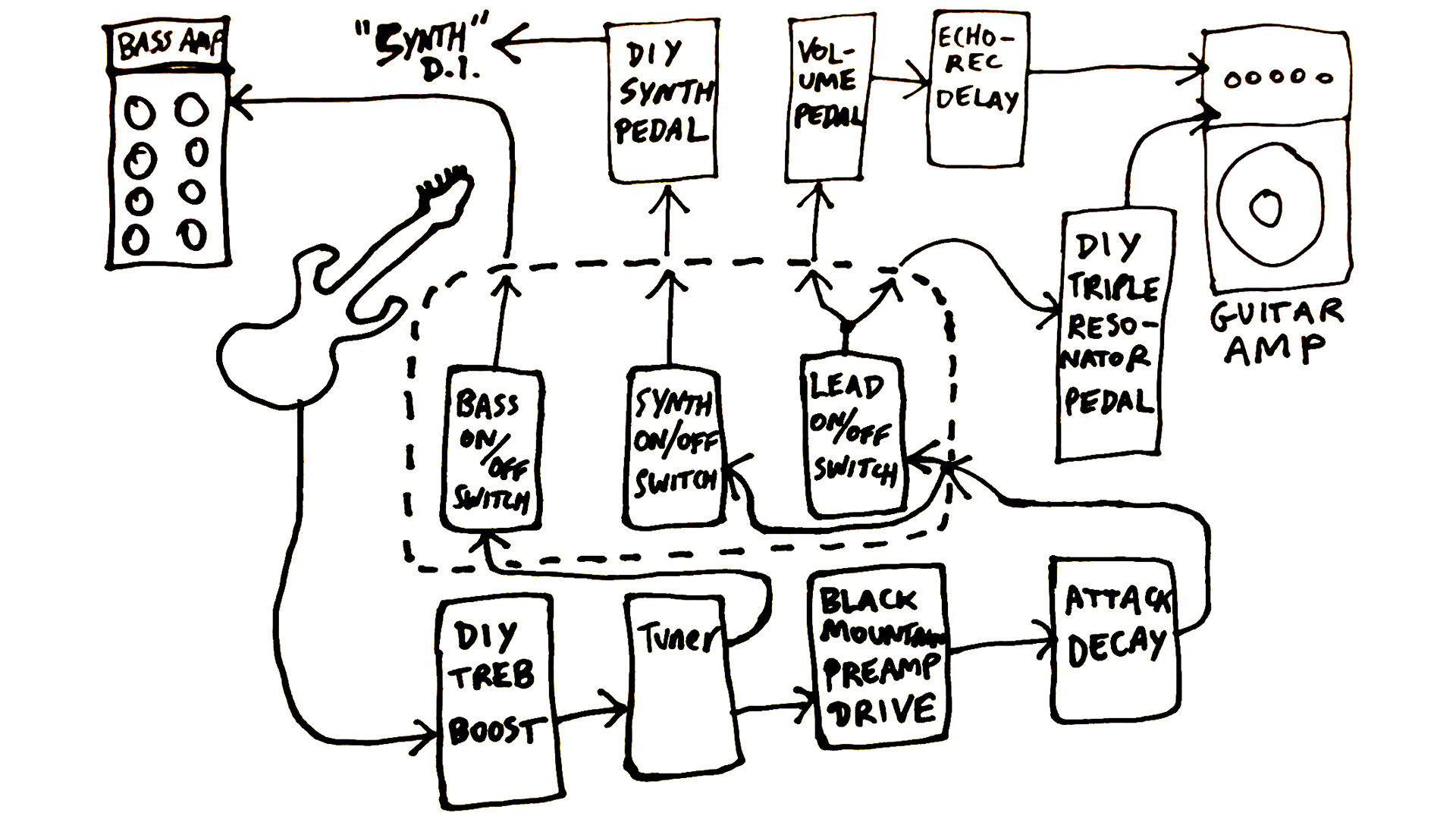
“Next for the guitar signal is a Demiurge Black Mountain Signal overdrive pedal, which is a smaller clone of the Hudson Broadcast and just gives an extra bite to the guitar – that slight ragged edge to the sound.
“Then I’ve got a homemade splitter/switcher – one split goes to a volume pedal which I use to send input to a Catalinbread Echorec delay pedal. The other part of the split signal goes to my homemade Triple Vactrol Resonator pedal.
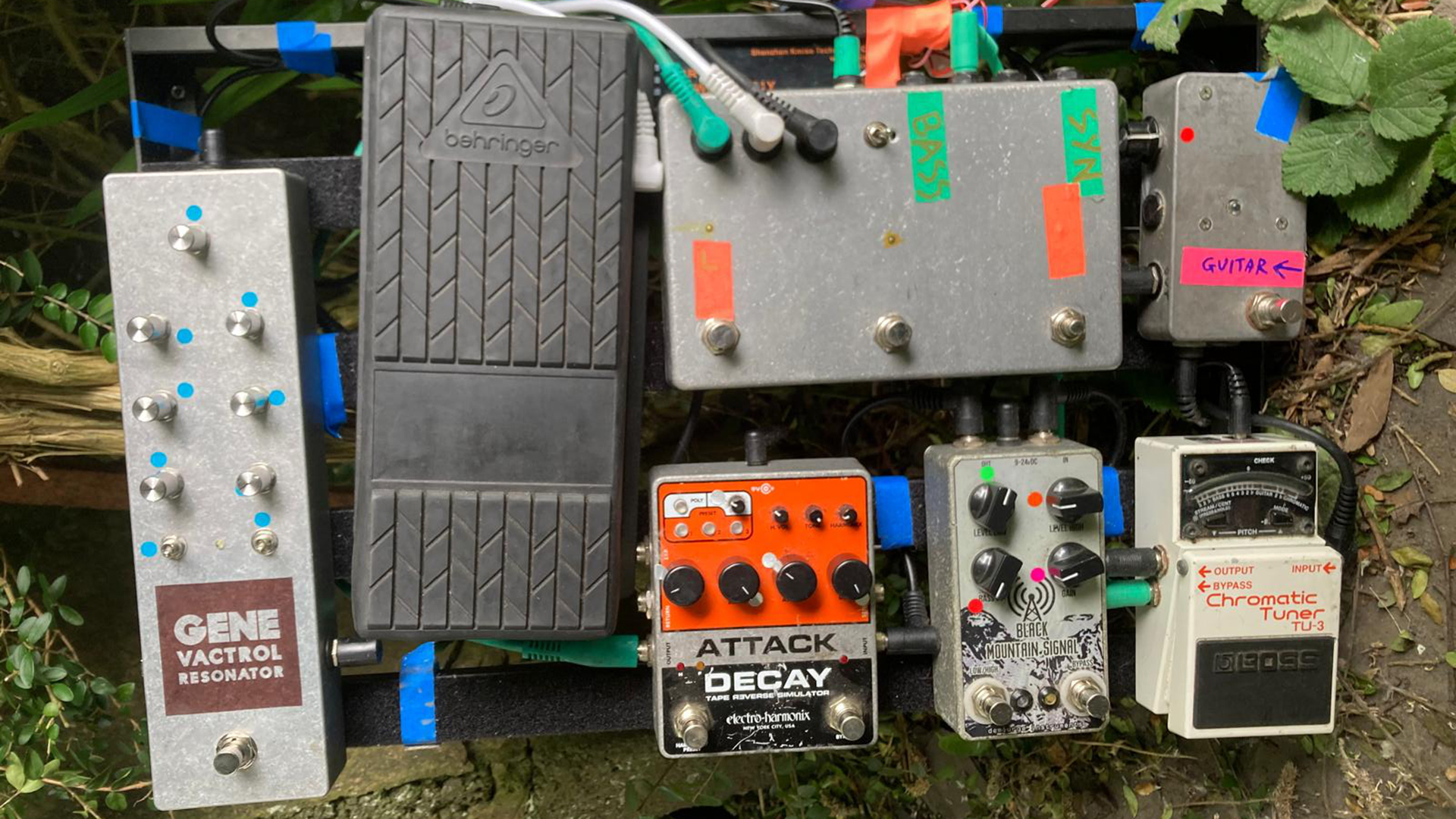
“I've started using it instead of a phaser because it can do everything a phaser can do, but you can tune the three frequency bands individually. I added a germanium diode clipping on/off switch so it can be used as a really insane tone-shifting overdrive pedal too. I haven't seen anybody else do it. I might try and make a few of them to sell, so look out for the GENE Vactrol Resonator!
“I’ve also got an EHX Attack/Decay, but I only use it one song to get an EBow sound. Using an EBow onstage is really hard because of how weird my pickups are. I did start off on a bowed instrument, though. I played double bass before I did guitar...”
So you have the appropriate qualifications to operate a bow with a guitar?
I would bow my guitar with a spring reverb tank, because it's got a really sharp metal edge. Then I would actually plug the spring reverb tank in...
“Yeah, I played bow guitar with Connan Mockasin, actually. I know now it's called ostrich tuning, but I thought I'd invented it – just putting all the strings in the same note.
“And I would bow it with a spring reverb tank, because it's got a really sharp metal edge. Then I would actually plug the spring reverb tank in, so the little pickups inside the spring reverb tank would actually feedback with the guitar pickups.”
Sorry… you used a spring reverb tank in the place of a bow? You were applying the tank itself to the strings?
“Yeah, I’d hold it against the strings and move it very slightly back and forth. Connan’s record had all of these layers of sound, like an orchestra, so I decided to do this pseudo-string-section thing.
“When we toured with Crowded House, Johnny Marr was touring with them, too, and the only time he talked to me was to say, ‘What the fuck are you doing with that?’ He just stood there for like five minutes watching me and then went, ‘Alright.’ And walked off. He must have thought it was the stupidest thing he’d ever seen! That’s been my only interaction with guitar hero royalty.”
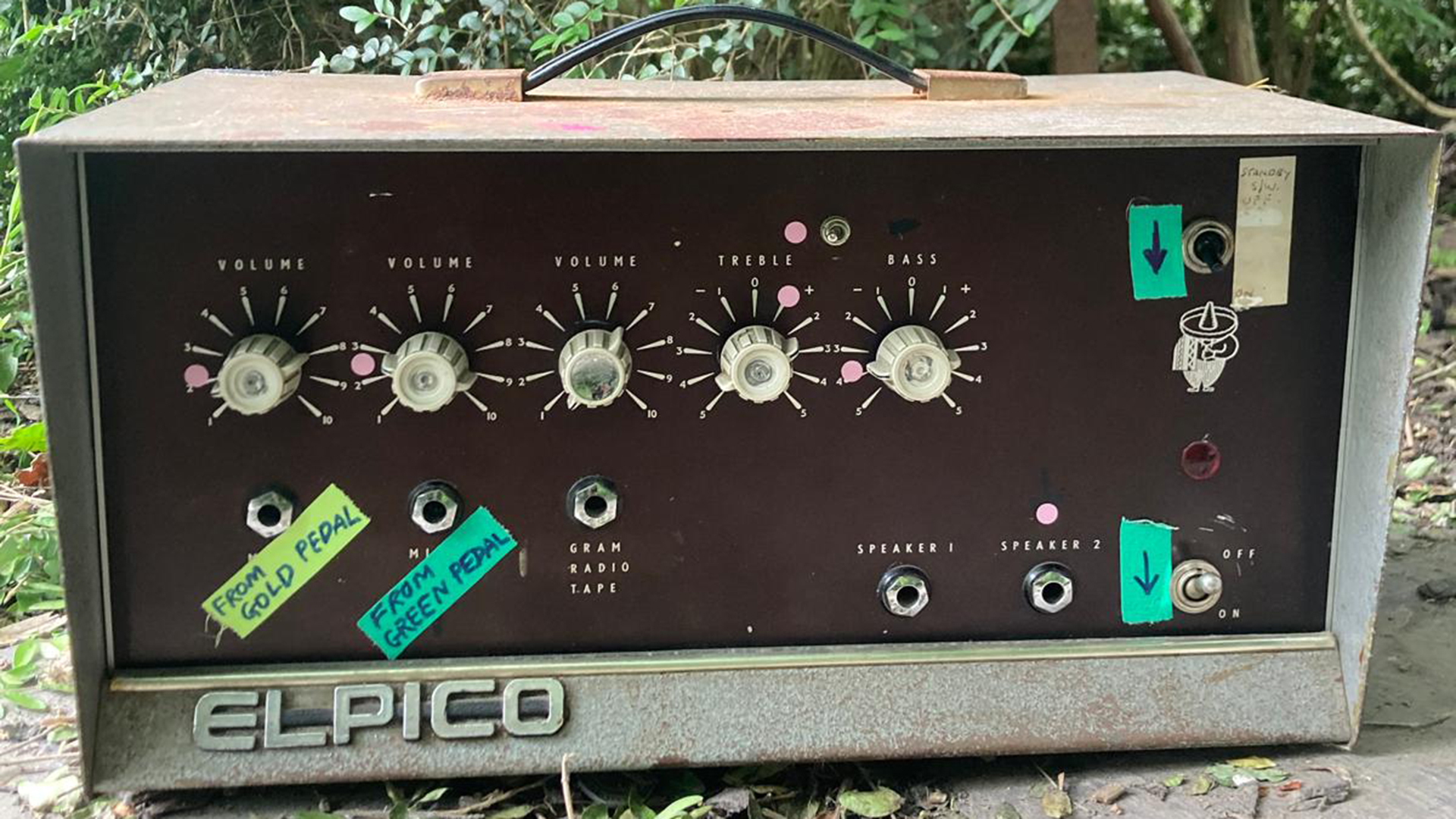
Your amp is also very unusual. I don’t think I’ve ever heard of an Elpico before.
I found my amp in a dumpster. A lot of the sound guys in venues would just refuse to even mic it up
“It’s an Elpico AC-88 that I found in a skip [a dumpster]. When I first started using it, around 2005, a lot of the sound guys in venues would just refuse to even mic it up. They'd be like, ‘Is that going to set fire to the venue?’ It's a bit like my guitar, really; they'd just openly use it as a chance to derive and mock my equipment.
“It’s actually an old ’60s PA amplifier, so it’s got a very flat response again, so it is another way that I can do that full-range thing. The bass still has to be split, but the guitar sounds like this very strange mixture of completely fucked up and distorted but also very smooth and soft and clean at the same time.”
What got you into tweaking and building gear?
“I think I started to build things myself because of my almost paranoid, superstitious thing, like, ‘If I know what's in the box, then it can't hurt my sound!’
“I just opened lots of stuff up. At first, it was because these were like physical things that had broken. So if a circuit board cracks, because you're hitting your keyboard with a drumstick – which was a thing that I did – then you poke the circuit board back into place.
“That inspired me because then I just looked at it as just a bunch of parts that you can reproduce. I thought, ‘If I make something, then I can really start hearing new sounds.’
“I always knew that, throughout musical history, songs were inspired by new instruments that had just become available. I wanted to be right there when the door opened.”
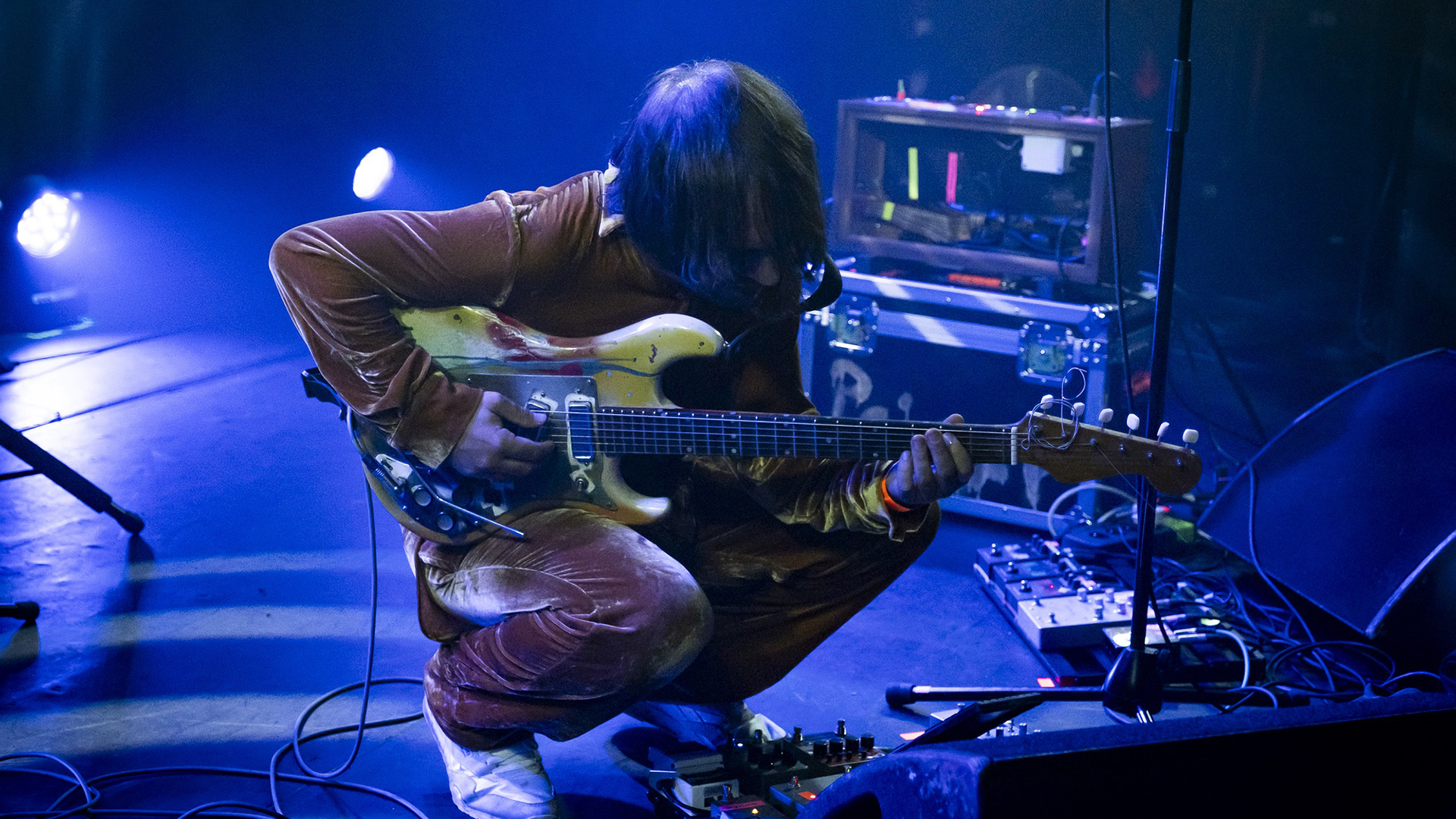
It does feel like we’re at a point where players are using guitars in new and different ways. We’ve seen so many techniques and ideas coming through lately.
“It’s interesting to think that in 100 years time people will probably still be playing guitars but the guitar might have a completely different role. It might not be there at all, but I imagine it will, because it’s almost as easy to express a feeling on the guitar as it is to with your voice. You really can just move around so many parts of your body and describe something.
“The other thing that's satisfying about it is that it never does the same thing twice. You can try and play the same thing twice on a guitar, but you're never really going to do it. Even really good players – which is what we want, that element of surprise.
“Those are the ingredients for a great instrument: being able to release something that's inside you – and for it to give you something back, in return, that surprises you.”
- LA Priest’s new EP La Fusion is out now. Head to EarthWindow.org for more information.
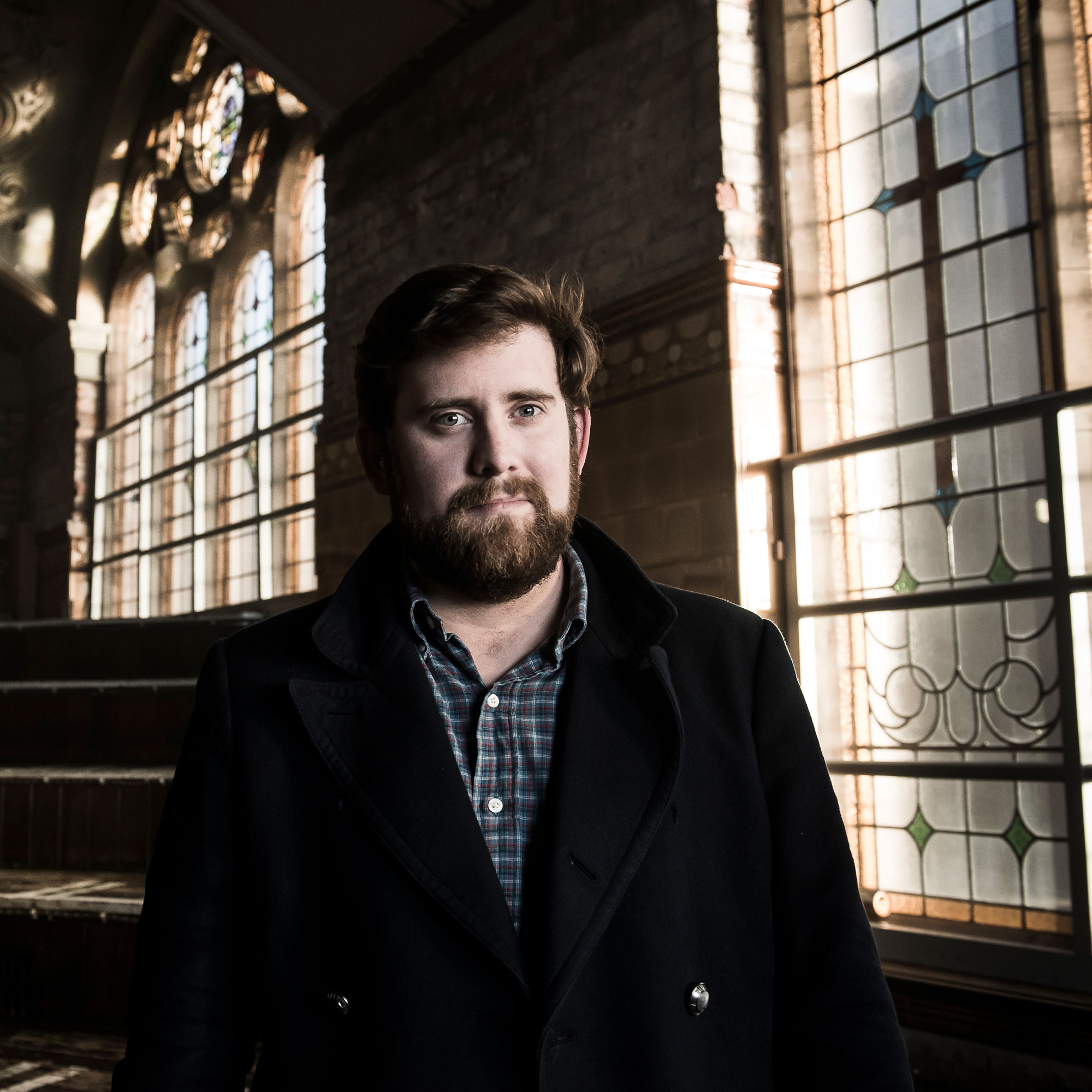
Matt is Deputy Editor for GuitarWorld.com. Before that he spent 10 years as a freelance music journalist, interviewing artists for the likes of Total Guitar, Guitarist, Guitar World, MusicRadar, NME.com, DJ Mag and Electronic Sound. In 2020, he launched CreativeMoney.co.uk, which aims to share the ideas that make creative lifestyles more sustainable. He plays guitar, but should not be allowed near your delay pedals.
“I remember there was a video of Gary Moore and he played Red House on this Fiesta Red Strat, and I thought it was just the most incredible thing”: Is Toby Lee Britain’s next blues-rock superstar?
“I love the guitar, but essentially it’s an instrument that belongs to the 20th century in many ways. So it’s a question of, what can you do to try to reinvent that vocabulary to make it seem relevant?”: Steven Wilson on the making of a cosmic prog epic




